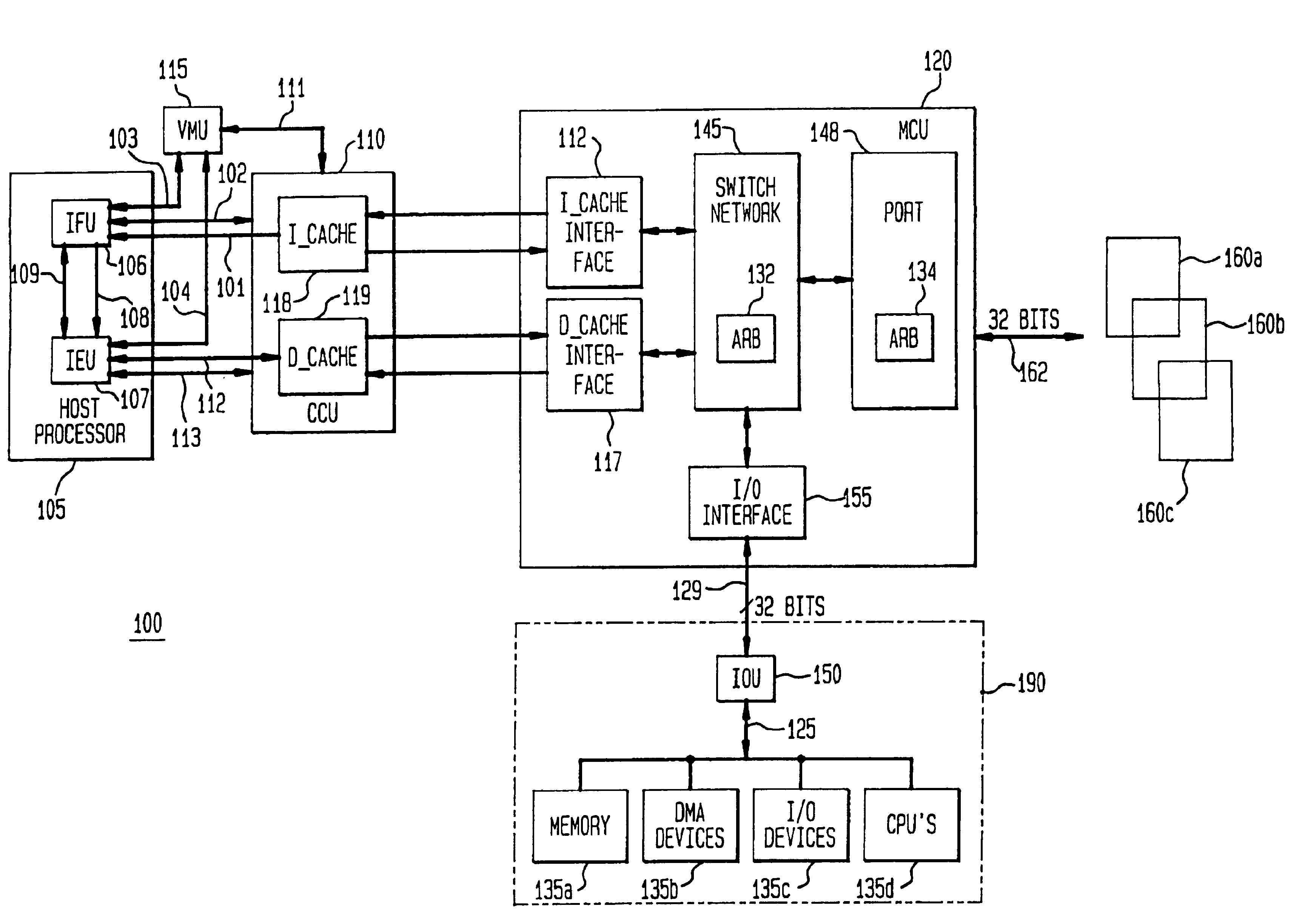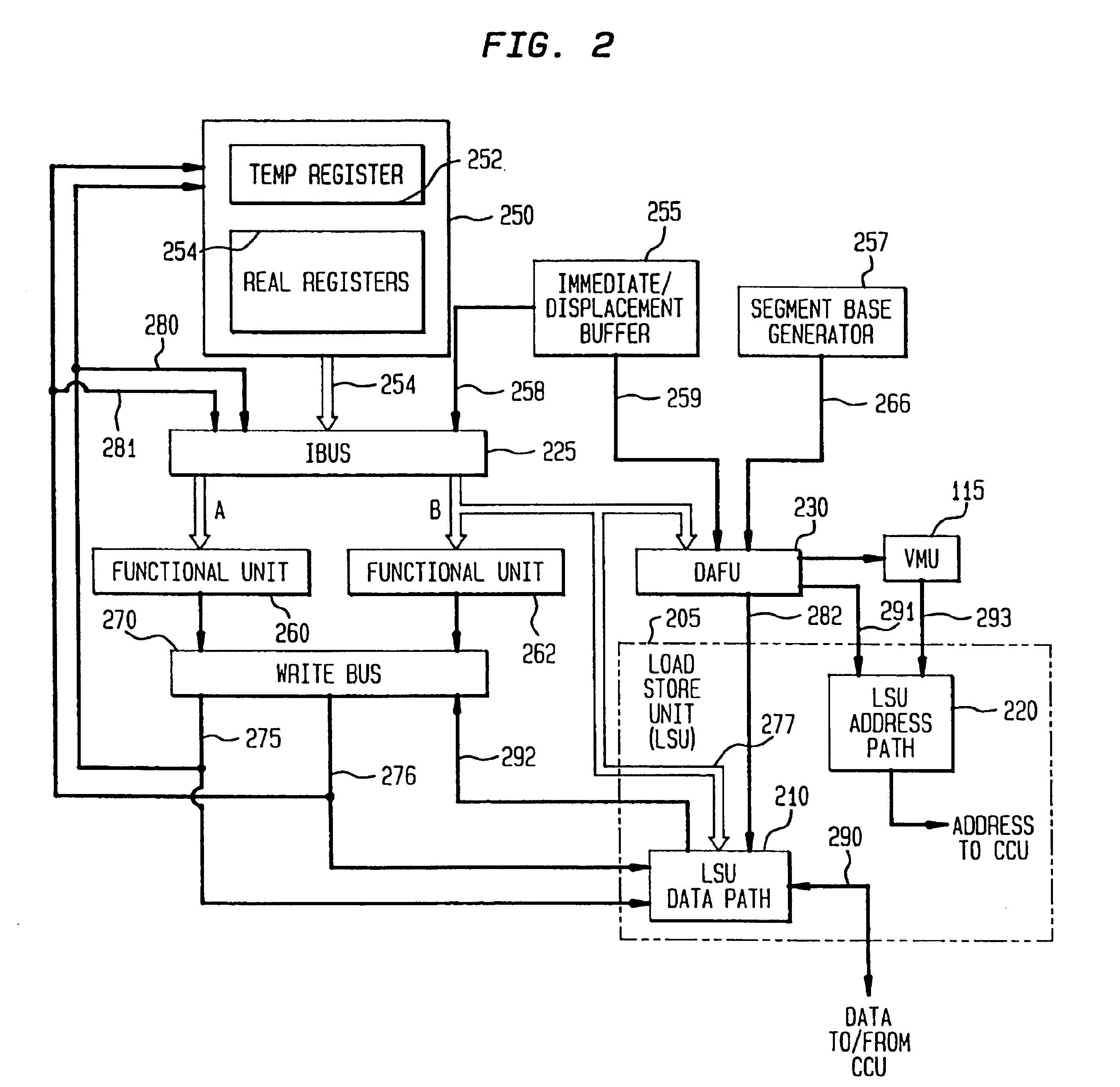System and method for handling load and/or store operations in a superscalar microprocessor
a superscalar microprocessor and load technology, applied in the field of superscalar microprocessors, can solve the problems of receiving incorrect operand values, affecting the processing efficiency of the microprocessor, and requiring a longer time to complete the data dependency logic,
- Summary
- Abstract
- Description
- Claims
- Application Information
AI Technical Summary
Benefits of technology
Problems solved by technology
Method used
Image
Examples
example 1
[0065]
Operationaddress1address2sizemaskLOAD.....1001—2 bytes2 bitsSTORE.....1000.....10114 bytes2 bits
If load address 1001 was compared with 1000 and 1011 without masking, no collision would be detected even though the store will actually write to bytes 1000, 1001, 1010 and 1011. If the two LSB's are masked out then the following addresses will result:
[0066]
Operationaddress1address2LOAD.....1000—STORE.....1000.....1000
example 2
[0067]
Operationaddress1address2sizemaskLOAD.....0100—4 bytes2 bitsSTORE.....0001.....10008 bytes3 bits
If three LSB's are masked out then the following addresses will result and the address collision will be detected:
[0068]
Operationaddress1address2LOAD.....0000—STORE.....0000.....1000
If only two LSB's are masked out then the following addresses will result and the address collision will not be detected:
[0069]
Operationaddress1address2LOAD.....0100—STORE.....0000.....1000
As discussed above, LSU 205 can select from a window of up to four load instructions and four store instructions requiring a cache request. These loads and stores contend with each other for CCU 110 and the selection between them is done as outlined below.
[0070]The store instruction must be performed in program order with respect to all other instructions, not just other load and stores. A store request is issued to CCU 110 when a signal comes from IEU 107 to retire the store instruction. This signal indicates that all...
PUM
 Login to View More
Login to View More Abstract
Description
Claims
Application Information
 Login to View More
Login to View More - R&D
- Intellectual Property
- Life Sciences
- Materials
- Tech Scout
- Unparalleled Data Quality
- Higher Quality Content
- 60% Fewer Hallucinations
Browse by: Latest US Patents, China's latest patents, Technical Efficacy Thesaurus, Application Domain, Technology Topic, Popular Technical Reports.
© 2025 PatSnap. All rights reserved.Legal|Privacy policy|Modern Slavery Act Transparency Statement|Sitemap|About US| Contact US: help@patsnap.com



